IMDEA Networks
Event Category: Major Event (Highlighted Event)
DISC 2014 - The 28th International Symposium on DIStributed Computing
The International Symposium on DIStributed Computing (DISC) is an international forum on the theory, design, analysis, implementation and application of distributed systems and networks. It is organized in cooperation with the European Association for Theoretical Computer Science (EATCS). This conference, in collaboration with PODC (the ACM Symposium on Principles of Distributed Computing), awards annually the highly recognised Edsger W. Dijkstra Prize in Distributed Computing and The Dissertation Award in Distributed Computing.
Read more arrow_right_alt8th IMDEA Networks Annual International Workshop
IMDEA Networks Institute annually holds a by-invitation-only thematic workshop in Madrid. The workshop accompanies a meeting of our Scientific Council comprised of prominent researchers.
Read more arrow_right_alt3rd IMDEA Networks Annual International Workshop: Internet Science
Institute IMDEA Networks annually holds a by-invitation-only thematic workshop in Madrid. The workshop accompanies a meeting of our Scientific Council comprised by prominent researchers. In addition to talks by Scientific Council members, the workshop includes invited talks by external experts in the research theme of the workshop. The 2011 workshop theme is Internet science with a focus on social networking.
Read more arrow_right_altACM e-Energy 2014 – The 5th International Conference on Future Energy Systems
Several members and stakeholders of IMDEA Networks Institute are leading the organization of ACM e-Energy 2014. Marco Ajmone Marsan and Antonio Fernández Anta are both long-standing researchers at the Institute. Two leading international figures in networking research, Jim Kurose from University of Massachusetts at Amherst (USA) and Jon Crowcroft, from University of Cambridge (UK), are both members of IMDEA Networks’ Scientific Council. Ajmone, Fernández Anta, and Kurose are Steering Committee members the ACM e-Energy conference, whereas Crowcroft is the General co-chair of the 2014 edition.
Read more arrow_right_altWOWMOM 2013, the 14th IEEE International Symposium on a World of Wireless, Mobile and Multimedia Networks
WoWMoM 2013 is the 14th IEEE International Symposium on a World of Wireless, Mobile and Multimedia Networks. WoWMoM addresses research challenges and advances towards a world of wireless, mobile, and multimedia pervasive communications.
Read more arrow_right_altInstitute IMDEA Networks Open House 2011: Research and development
Why should I consider a future in research? What sort of opportunities does a PhD open up for me? What makes research in the science of networks such an exciting career choice? How can we ensure that the Internet can grow and adapt to ever-changing needs over the coming decades? What lies beyond the Internet? What inspires network research?
Read more arrow_right_alte-Energy 2012, the Third International Conference on Future Energy Systems, Where Energy, Computing and Communication Meet
e-Energy is the third International Conference on Future Energy Systems, which is organized annually since 2010. Due to the increasing significance of power consumption in computing and networking, the goal of e-Energy is to bring together researchers, developers and practitioners working in this area to discuss recent and innovative results, as well as identify future directions and challenges. The continuing spread of Information and Communication Technology (ICT) has contributed much to the reduction of energy consumption in many areas of everyday life. Nevertheless ICT infrastructure continues to expand in capacity and reach, and needs to be more energy-efficient itself. Additionally, ICT can be used to optimize the production, transport and consumption of energy in other setups.
Read more arrow_right_altWONS 2014 – The 11th IEEE/IFIP Annual Conference on Wireless On-demand Network Systems and Services
Providing secure, reliable, and dependable wireless services is the primary objective of modern data networks. While enabling technology for “on-demand” services through any of the common wireless architectures, such as WiMax, WiFi, ad hoc networks, sensor networks, and vehicular networks, has made large strides, many formidable challenges remain to be overcome, such as the integration of infrastructure-based and ad hoc networks, robust algorithms for self-organizing, reconfigurable wireless networks, on-demand service models and their performance in highly-volatile interconnect topologies as well as interoperability of different architectures.
Read more arrow_right_altScience and movie scientists: Does reality surpass fiction?
How do science and movies get along? Is it true that, most of the times, truth is stranger than fiction?
Read more arrow_right_altIMDEA Networks and The Future Wireless Internet, Semana de la Ciencia 2008
Download the Programme of activities organized by IMDEA Networks in collaboration with the Higher Polytechnic School of University Carlos III of Madrid in English ( ; 95 KB) & Spanish (
; 95 KB) & Spanish ( ; 38 KB).
; 38 KB).
Michal Kryczka’s presentation ( ; 867 KB)
; 867 KB)
Download Póster: Semana de la Ciencia ( ; 2,4 MB)
; 2,4 MB)


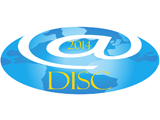

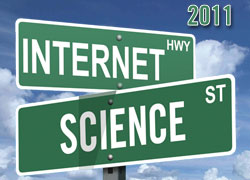

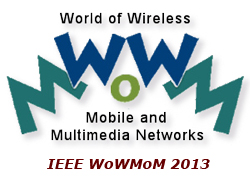
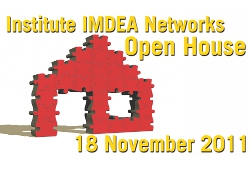


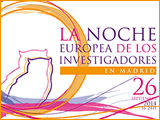
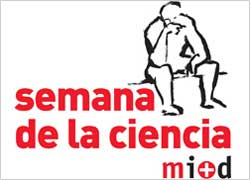
Recent Comments